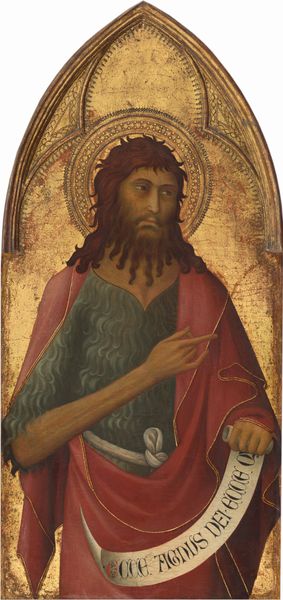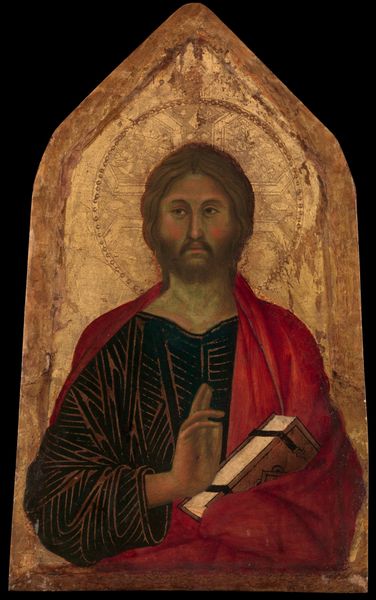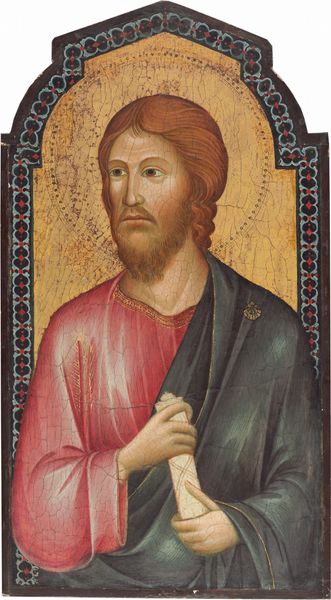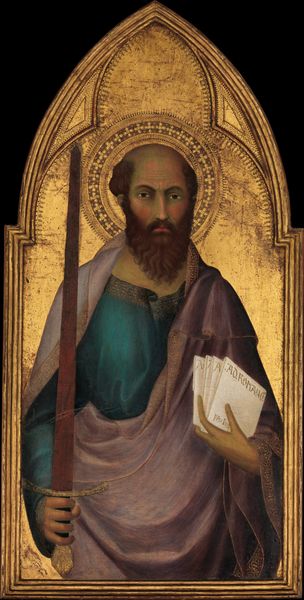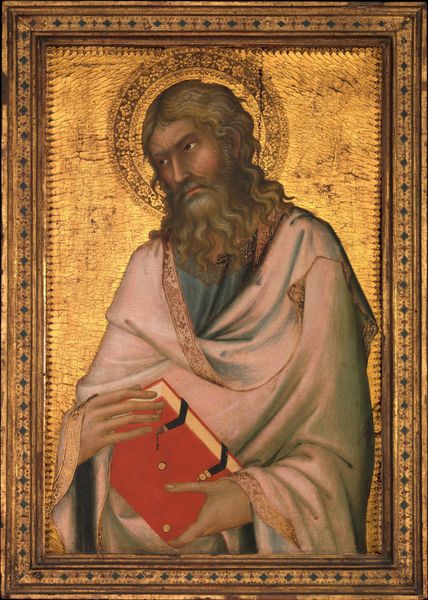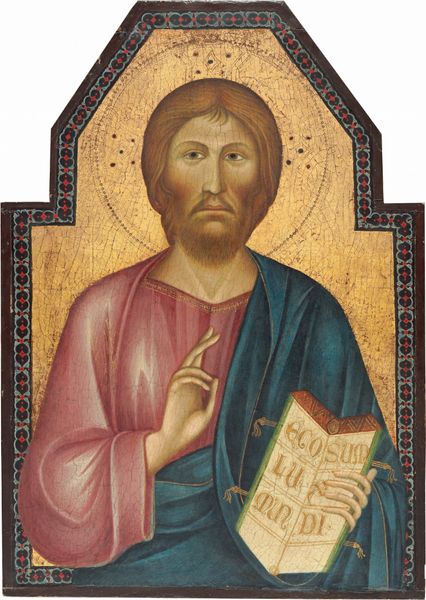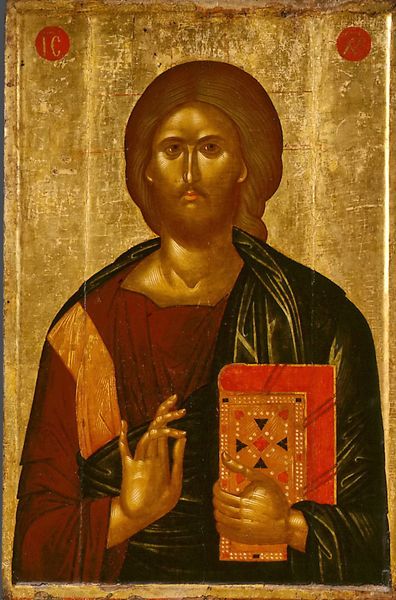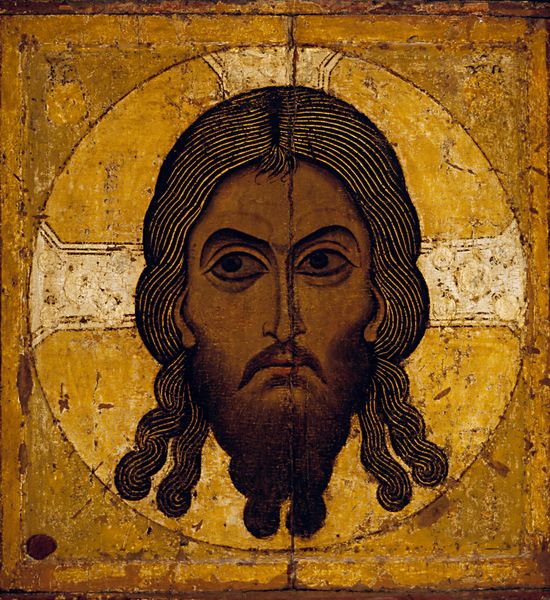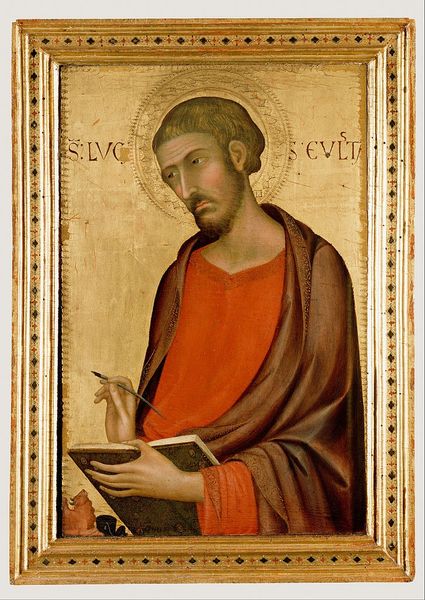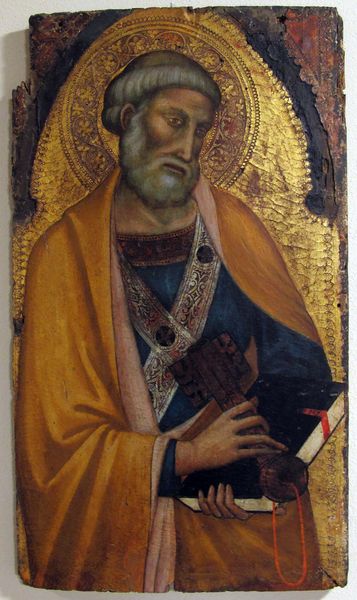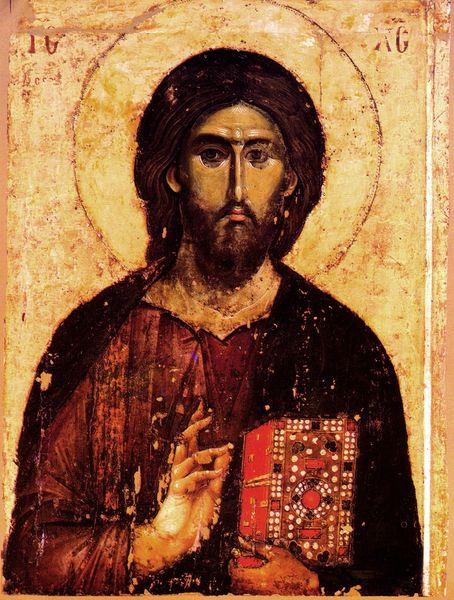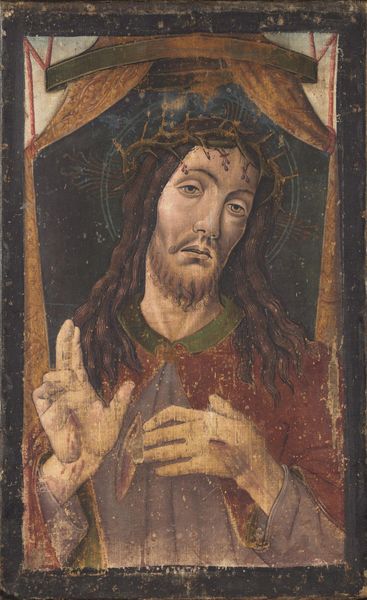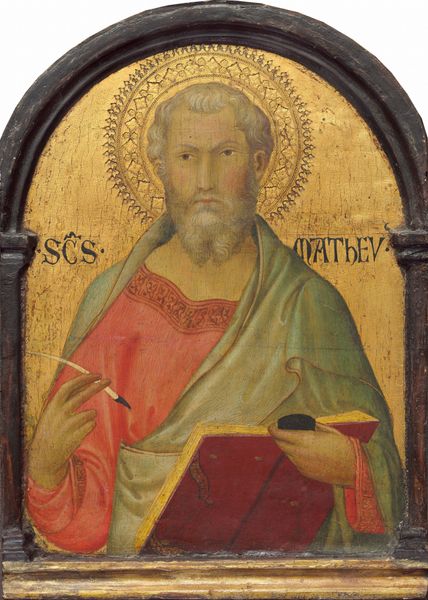
tempera, painting
#
portrait
#
medieval
#
tempera
#
painting
#
prophet
#
gothic
#
oil painting
#
portrait art
Copyright: Public domain
Curator: Here we have Luca di Tommè's "Saint John the Baptist," a tempera on panel created around 1389. It resides here at the Getty Museum. What are your first impressions? Editor: Austere, yet somehow inviting. There's a gauntness to the saint, almost emaciated, but his gaze is direct and steady, a real focal point drawing the eye in. Curator: It’s striking how this panel embodies late Gothic ideals, a kind of bridge from earlier devotional works towards the Renaissance focus on individual portraiture. Look how the gold leaf background reinforces the divine nature, yet his physical form is given considerable attention. Editor: The symbolism is rich. The halo, of course, denotes sanctity. But the rough, animal-skin garment… It speaks volumes about his life of renunciation in the wilderness. Then, the scroll. Is that "Agnus Dei?" Curator: Precisely. "Ecce Agnus Dei, ecce qui tollit peccatum mundi," Behold the Lamb of God, who takes away the sins of the world. That phrase firmly situates John as a herald of Christ. But his raised hand in blessing is an interesting decision in representing authority. We often perceive saints as meek. What do you think about it? Editor: Right, it adds to that austerity, that sense of prophetic power. And the upward gesture, is meant to direct the viewer towards God. His gaze combined with that posture definitely feels confrontational rather than gentle, quite distinct from common associations with saints from the period. Curator: And the institutional function, think of where this would be placed. Likely a side panel or element in a larger altarpiece, this wasn’t designed to stand alone as an independent work, rather it worked within the framework of other iconography to elevate John as the greatest of prophets. The placement was as essential to meaning as brushstroke. Editor: His positioning is genius in terms of symbolic impact. The repetition, I think, is what really reinforces the point of authority, which, interestingly, we may relate with saints nowadays because that portrayal had great diffusion over the years. It reveals the endurance of visual motifs and their ability to connect past to present. Curator: Absolutely. Tommè’s John remains relevant, even outside of religious settings. The psychology behind how figures hold authority or are visually depicted can carry new connotations when detached from the altar. Editor: This glimpse into "Saint John the Baptist," makes one consider how visual elements accumulate multiple meanings over time.
Comments
No comments
Be the first to comment and join the conversation on the ultimate creative platform.
